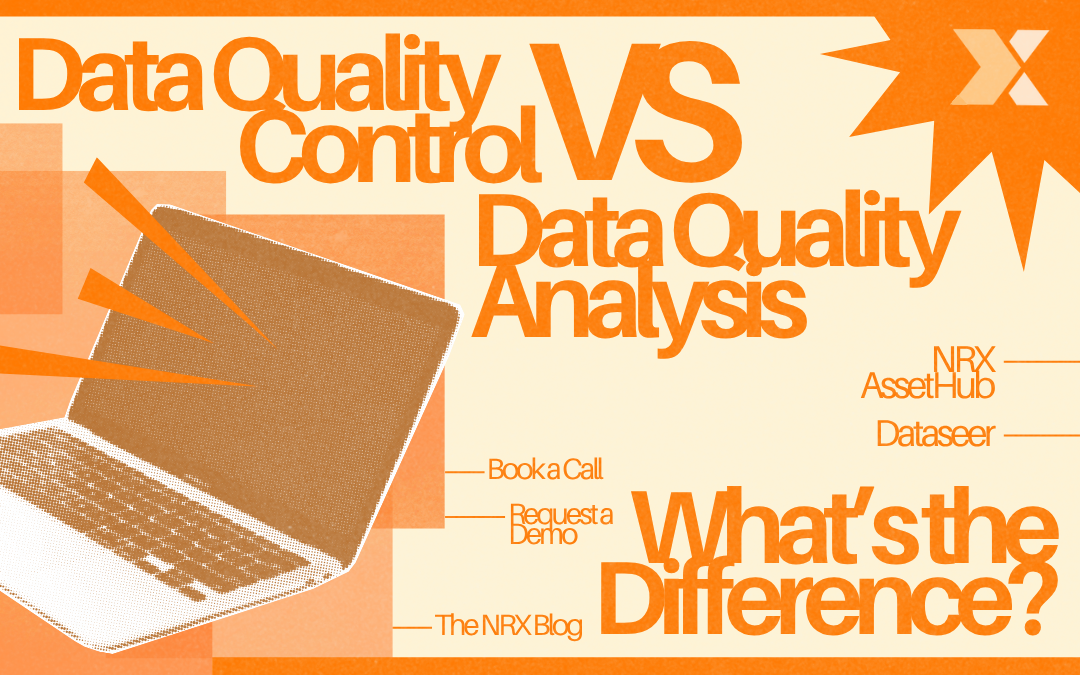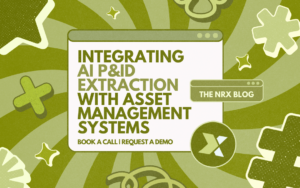According to a survey conducted by Gartner, almost 60% of companies fail to track the financial impact of poor data quality each year. This lack of measurement makes it harder for organizations to recognize just how costly unreliable data can be. It also reinforces the need to distinguish between data quality control and data quality analysis.
EAM and CMMS platforms are becoming central to enterprise operations. As a result, understanding what quality means in the context of data has never been more important. From digital twin initiatives to large-scale migration projects, managing data quality is essential for success.

Defining the Two: Control vs. Analysis
Data quality control is a proactive approach. It uses systems, validations, and checks to prevent bad data from entering your environment. Think of it as setting rules and guardrails. These include validation fields in SAP PM, naming standards in Oracle EAM, and restrictions in HxGN EAM.
On the other hand, data quality analysis is reactive. It involves reviewing and identifying errors after data is in the system. This could be through reporting, gap identification, or root cause analysis. In short, control prevents the fire, while analysis puts it out.
Why the Distinction Matters
Many companies mistakenly focus solely on analysis while chasing down problems once they appear. However, relying only on retroactive audits is similar to fixing a leak every week instead of replacing the pipe. Both are necessary, but data quality control is more scalable when you are managing millions of asset records across geographically dispersed systems. Data quality control reduces the need for rework and lowers risk during migration projects.
When migrating from legacy systems into modern EAMs, poor quality control can result in corrupted asset hierarchies, mislinked FLOCs, and incomplete PMs. These issues not only delay digitalization but also threaten compliance and performance.
A Tale of Two Teams
Consider two rail infrastructure companies undergoing digital migration. Company A implemented automated data quality control while including auto-validation rules. Company B did not. Company A completed their migration to a platform such as IFS on time and under budget. They needed less than 2% post-migration corrections. Company B spent six extra months correcting bad PM data that broke their digital twin connections.
This example highlights the tangible impact of quality control. It is more than just about software, as it is about business continuity and long-term strategic alignment.

How Data Cleansing Tools Support Both
Modern data cleansing tools are built to serve both quality control and analysis. These platforms often include dashboards that surface metrics such as data completeness and naming standard adherence. They also integrate directly with other platforms to apply real-time controls during data entry.
For instance, an AI-enabled cleansing tool can be used to identify over 10,000 inconsistencies in an organization’s functional location hierarchy. The tool would not just find the problems, it would suggest control rules to prevent future input errors during field technician updates.
Benefits of a Dual Approach
When both data quality control and data quality analysis are prioritized, organizations experience a range of operational improvements. Asset downtime decreases because PM schedules are more accurate. Migration timelines speed up due to fewer post-transfer corrections. Additionally, digital twin models become more reliable, as they reflect real-world conditions with greater precision. Audit compliance also improves, which is then supported by clean and traceable master data. In an era where digitalization is core to competitive advantage, ensuring both proactive and reactive strategies for data quality is key.
Conclusion
A commitment to both data quality control and data quality analysis represents a strategic move. With the help of advanced data cleansing tools, businesses can protect against bad data, uncover insights, and ensure smooth digital transitions. By doing so, they create a resilient and scalable data environment.
Integrating AI P&ID Extraction with Asset Management Systems
ISO 14224 vs Other Maintenance Standards: What Sets It Apart?
Building Trust in Your Asset Data: Strategies for Governance
Share this article




